Table of Contents
Deck building games are a relatively new genre of games spearheaded by Dominion which was released in 2008.
Dominion introduced a unique mechanic whereby players focused on crafting their own unique decks of cards while playing the game instead of using a traditional board or character sheet.
At the end of the game players assess their own decks to determine points earned and who the winner of the game is.
Deck building games are not to be confused with collectible card games in which cards are collected and decks built before a game is played.
There is no doubt that deck building games have become hugely popular. Since Dominion, there has been an explosion of deck building games that have hit the market.
In this article, I am going to look at what in my opinion, are the 11 best deck building games and why.
Top 11 Best Deck Building Games
1. Dominion
Players: 2 – 4
Duration: 30mins
Time to Learn: 15mins
Dominion was designed by Donald X Vaccarino and was the first game to introduce the concept of ‘deck building’.
Since then, Dominion has taken the world by storm. The game won the Spiel des Jahres award and has had 8 expansions released which build upon the game.
There is no doubt how revolutionary this game is. Dominion was the first deck building game I ever played. It took me a playthrough to understand the basics of the game. But once I knew what I was doing I was hooked.
Since then, deck building games have become a staple to game nights I host.
Dominion is the gateway game to deck builders and this is why it is number 1 on my list.
Gameplay
Dominion begins with the establishment of a Kingdom which is an assortment of 10 cards that are decided by the players and placed in the middle of the table (generally in ascending order of cost).
Seven cards are included in the Kingdom in every game:
- Copper, silver, and gold (treasure cards);
- Estates, Duchies, and provinces (Victory cards); and
- Curses.
Players start the game with 10 cards consisting of a few money cards and a couple of victory cards. The aim of the game is to use these starting cards to grow your deck into an empire and amass the most victory points.
Players need to make decisions each turn of which type of card to play and which to buy.
Each turn a player gets to play one action card from their hand. These allow a player to do a range of things including:
- Gain extra cards;
- Gain extra currency;
- Gain extra buys;
- Gain extra actions; or
- Attack.
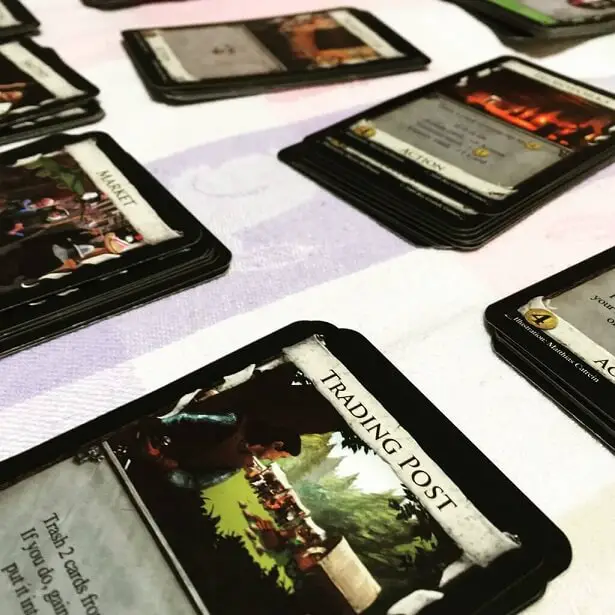
Purchased cards go into the players ‘discard pile’. The player then puts all played cards and the rest of their hand into the discard pile and draws 5 new cards from their deck.
Note: when a player runs out of cards, they shuffle their discard pile to form a new deck.
The goal of the game is to purchase more victory cards than your opponents. Each victory card is worth a different amount of victory points.
Once the last province card is purchased the game is over. All players add up their victory points and the player with the most points wins.
Pros:
- First deck builder game
- Plenty of expansions to keep the game interesting
- Newbie friendly
Cons:
- The theme is a bit dry
- Some luck involved
- Lots of shuffling!
2. Mage Knight: Ultimate Edition
Players: 1 – 4
Duration: 60mins – 240mins
Time to Learn: 45mins
Mage Knight: Ultimate Edition is the recently released version of Mage Knight: The Board Game that includes all expansion content available to date.
Mage Knight is probably the most complex and deep game on my list but once you learn how to play, it is an incredibly fun and addictive game.
The game has a rich and engaging theme where players control one of four Mage Knights that travel across an unknown territory all while fighting monsters, casting spells, leveling up, conquering cities, and burning down monasteries!
You know… typical Mage Knight stuff.
Gameplay
The game is played on a turn by turn basis over a number of different rounds – determined by which scenario you choose to play.
Each round of the game has a day and night cycle – this helps to keep track of the number of rounds played but also significantly affects how the game is played. Night and day have different effects on players, like determining how difficult terrain is to navigate and how effective spells are when cast.
Each payer starts the game with 15 cards. These cards represent everything a player can do. They determine the actions a player can take like:
- Movement;
- Attack Power;
- Ability to persuade units; and
- Ability to absorb damage in combat.
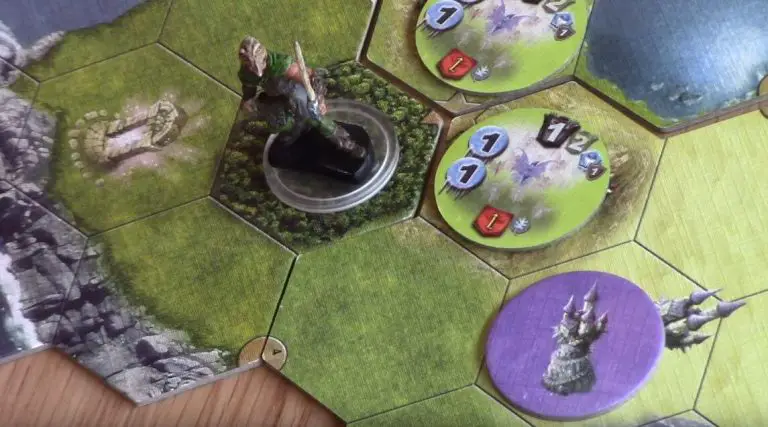
All cards have a primary and secondary attribute (which is generally a more powerful attack a player can choose to use by expending more mana).
Players use these cards to explore the land which is made up of tiles – like a board game. Along the way the players will gain fame from clearing dungeons, killing enemies and controlling outposts and cities.
Mage Knights will also level up while adventuring – Leveling up allows players to access different cards that are much more powerful than the starting cards and also increase the players hand size.
Mage Knight is a very open-world game. The game gives the choice of where to go and how to tackle different situations presented to you as the player.
This opens up a world of opportunity to try different strategies and ideas on how to progress in the game.
I have to admit – I have only played the solo version of this game. My friends are very intimidated by the steep learning curve that comes with Mage Knight and I’ll be honest – it took me a few play throughs to get the hang of it.
Once I finally learned how the game works – it has been one of my favorite solo deck building games to play. The progression mechanics and open-world feel are amazing.
The game is a mixture of a deck building game and an RPG where where it really feels like a campaign with persistent changes and can take multiple sessions to play.
Pros:
- Very deep theme.
- Able to be played solo
- Can play cooperatively or competitively with other players
- Insane replay value (especially with expansions)
Cons:
- Complex gameplay
- Requires skill
- Steep learning curve
3. Legendary: Alien Encounters
Players: 1 – 5
Duration: 30mins – 60mins
Time to Learn: 10mins
This is a deck building game in the Legendary series which I have two of in my list. The Legendary series of deck building games are incredibly popular and have well thought out and tested game play mechanics. Most of the games use these mechanics as their core and paint a certain theme of the game over top for immersion and to give the game a different aesthetic and feel.
The theme for this particular game (if it wasn’t obvious) is centered around the ‘Alien’ movies.
Players build decks comprised of characters from the movies and must prepare for the invasion of oncoming Xenomorphs while trying to play through each scenario’s objectives.
Legendary: Alien Encounters is an awesome deck building game. My group of friends and I absolutely love challenging co-op games (and most of us also love the Alien movies!) – so this game is perfect to drag off the shelf on game night.
Even if you aren’t a fan of the Alien series this game will appeal to you if you love deck building games which require you to play as a team.
Gameplay
The game comes with four scenarios, one for each of the Alien movies. At the start of the game, you will have to decide as a group which of the iconic movies you want to play through.
Each player starts off with the same deck of cards – except for the unique ‘character’ card, which provides each player with a unique ability able to be used throughout the game.
Each scenario has three objectives players need to work through in order to beat the game.
The objectives all offer different cards that are mixed together with a certain number of ‘drone’ cards – these are called hive decks and its what the players will be playing against during each scenario.
Drone cards add modifiers to different encounters. These can either make the game easier or harder.
At the start of a player’s turn, a new card from the hive deck is placed face down in an area called ‘The Complex’. These aliens remain face down until someone scans the room they’re in and risks something bad happening right away or when they make it to the Combat Zone.
Player upgrades are dictated by the character deck. This allows each player to buy powerful upgrades for their character with buffs that will help them overcome the Alien invasions.
Players play the game in turns, drawing 6 cards from their own deck each turn.
These cards contain all the actions a player can use during their turn including attacks.
During the game – if the Aliens kill all players before an objective is complete, they win. Players win if they are able to complete all missions before succumbing to the Alien horde.
Pros:
- Awesome theme
- Game is easy to learn and understand
- Differs from Legendary: Marvel with reveal feature
Cons:
- Set up time of the game
- Over 600 cards – do not mix these up… trust me
4. Clank!
Players: 2 – 4
Duration: 30mins – 60mins
Time to Learn: 10mins
Clank! is a brilliantly thought out deck building board game. Players play as on one of 4 characters who delve into the angry lair of a dragon to steal precious artifacts.
The deeper the characters delve – the bigger the treasure… but also the closer they get to the dragon.
One false step and CLANK! Game over!
Gameplay
As with most deck building games, players start with a simple deck of currency and low-level cards.
These cards are used by players during the game to purchase better cards and improve their characters.
The difference between Clank! and other deck building games is that it incorporates the use of the very effective and unique ‘Clank!’ mechanic throughout the game.
The way this works is that the deeper a player delves into the cave the more chances there are to make a ‘Clank!’ noise. When this is triggered, players need to add wooden cubes to the ‘clank area’ of the board.
The dragon is understandably unhappy its treasures are being looted and will wake up at random points during the game. At this time the wooden cubes accumulated in the clank area are thrown into a bag and cubes are drawn at random.
If your colored cube gets drawn – you take damage. The cube is added to a damage track on your character and you are one step closer to the death.
The trade off is between pushing deeper into the cave you go the better the treasure.. but the higher the chance of triggering the Clank! mechanic.
This encourages players to push their luck and means players are always on the edge of their seats. The game can be very intense. Which is actually really fun!
Obviously, the player with the best loot at the end of the game wins. But only if they are alive.
Will you risk going deeper into the cave for the shiny loot? Or play it safe?
Pros:
- Unique Clank! Mechanic
- Brilliant if you like to push your luck / organized chaos!
- Risk vs Reward is awesome and makes for some cool strategies
Cons:
- Fiddly to set up
- Some players hate randomness elements
5. Blood Bowl: Team Manager
Players: 2 – 4
Duration: 90mins
Time to Learn: 10mins
Blood Bowl: Team Manager is a deck building game that relies on drafting fantasy monsters to fight for you in the blood bowl championship.
The game is incredibly violent and it’s every player for themselves. Players need to work out the best ways to draft their fighters, hire staff, purchase training facilities and learn to cheat without getting caught.
Gameplay
In the game players choose the manager of their team – each manager will have slightly different team cards and a different play style – but not game breakingly different. The game is very well balanced.
There are 6 managers to choose from:
- Humans
- Chaos
- Dwarf
- Wood Elf
- Orc
- Skaven
The game is divided into 3 phases.
The maintenance phase is where players’ cards are refreshed and they draw new hands.
The match up phase is where players play their monsters in battles. Each card has a star value that contributes to winning that players match up. If your monsters’ stars are higher than your opponents, you win.
Players have a variety of strategies of how to play this phase including:
- Tackling – the player rolls a dice and has a chance to tackle their opponent lowering their star score.
- Sprinting – the player is able to draw a card from their deck and discard one.
- Passing – There is a ball token that starts in midfield and is worth two stars to the player who possesses it. Passing moves the ball closer to the player who passes.
- Cheating – place a cheating token on your player face down. This is like a chance card – you could either end up with a higher or lower star score – depending on if you get away with it!
The scoreboard phase is where players add up their scores and get payouts which are used to upgrade their team.
Players play through five rounds of the above – and in the end, the manager with the most points wins.
Pros:
- Brilliant drafting deck building game
- Great theme
- Very easy to learn
Cons:
- Long game time
- Some people dislike the cheating mechanic
6. Legendary: A Marvel Deck Building Game
Players: 1 – 5
Duration: 45mins
Time to Learn: 10mins
Our second Legendary game in my best deck building games list!
This one is centered around the Marvel universe. So if you love Marvel superheroes then this is a MUST HAVE deck building game for you.
Gameplay
Like Legendary: Alien Encounters, this game has scenarios. The scenarios in the Marvel version however, focus on which mastermind supervillain your heroes will be fighting (Dr. Doom, Loki, Magneto, etc).
Players take on the role of S.H.I.E.L.D agents who must assemble a team of superheroes to fight cooperatively to take out the supervillain.
Players start the game by turning over the top card of the ‘villain deck’. This will be a card that outlines the scenario – the villain could invade a city, capture a hostage or create a special event.
Players need to use their cards to recruit superheroes to get through these objectives. Obviously, as the game progresses, stronger and stronger superheroes are able to be recruited.
During the game, as players fight and destroy villains and henchmen they will collectively earn victory points.
Winning the game is determined if players are able to defeat the ‘mastermind villain’ before he defeats them.
The game is very similar to the Alien Encounters editions as to how it is played – except it oozes the Marvel theme.
Pros:
- Perfect theme if you are a fan of Marvel
- High-quality cards and artwork
- A unique twist on a deck building game
Cons:
- Can be quite easy if playing purely cooperative
- Only 4 masterminds – can be repetitive
7. Mystic Vale
Players: 2 – 4
Duration: 45mins
Time to Learn: 5mins
This is a deck building game that can be played with real cards or on an iOS, Android or Steam app.
The game is set in a fantasy land where a curse has been placed on the valley of life. To cleanse the land of corruption, druids come to the land to recruit powerful allies, animal spirits and more to try to save the land and mother nature herself.
Gameplay
Players play the game as competing druid clans who are all competing to cleanse the curse upon the land.
All players start the game with an identical deck of cards.
Now, this is where Mystic Vale differs from other deck building games. It is not only the decks that you will be building. But the actual cards themselves.
Players’ decks only contain 20 cards and half of them are blank.
Each blank card has 3 slots with which to upgrade and add advancements. Basically, druids take turns purchasing advancements such as animals (hawks and rhinos, etc) and other buffs that they can slot into these cards depending on their strategy (in the physical game these are sleeves you put the blank cards into).
The game has an element of ‘push your luck’ as players are able to draw from their deck until they draw three ‘decay’ cards.
9 cards in a player deck have the cursed land enchantment. If you see 3 of these you may not draw any more cards and are stuck with the cards you have.
Players need to decide which strategy they want to take to play the game – try luck at building stronger cards, or use the cards they have to collect crystals (and victory points) to win the game.
There are a limited amount of victory points – the player to collect the most wins the game.
Pros:
- Truly unique sleeving mechanic
- More players do not mean more time
- High replay value
Cons:
- There isn’t a ‘catch up’ mechanic if a player is miles ahead of the others
- Not suited for new players
8. Star Realms
Players: 2
Duration: 20mins
Time to Learn: 5mins
Star Realms is a 2 player deck building game that only takes 20mins to play.
It is great if you are in a rush or want to play multiple games in one sitting.
The game is a spaceship combat simulator created by Magic: The Gathering Hall of Famers Darwin Kastle and Rob Dougherty.
The game is also available on iOS, Android, and Steam if you want to play the digital version against online opponents.
Gameplay
Star Realms is a game that has the normal mechanics you would expect in a deck building game, but also combines elements from trading card game style combat.
In the game, the objective is for players to reduce their opponents’ health (authority) to zero.
The game is very simplistic. Both players start with money and attack cards.
When it is their turn they can purchase other cards (attack, armor, etc) or attack their opponent.
Each card has text which explains the special abilities and cost to use that card – and there is large variety of cards to play.
Cards have synergies when played together. For example, there are clan cards where, if two cards are played on the same turn and are part of the same clan, additional benefits are granted to the player.
That’s basically it. Very simple rules and a very simple game. It is a lot of fun to play and games are over very fast.
Pros:
- Fast game time
- Free on steam, android, and iOS
- Addictively fun to play
- Low price point
Cons:
- Artwork is lacking
- Multiple copies of the game are required if more than 2 players
9. Thunderstone Quest
Players: 2 – 4
Duration: 60mins – 90mins
Time to Learn: 10mins
Thunderstone Quest is the third version of the incredibly popular deck building game that follows a heroic venture of 4 heroes into a dungeon where they fight monsters to gain experience and treasures.
Throughout the game players will find keys that unlock the final boss ‘The Guardian’. If players are good enough to defeat The Guardian – they win the game.
Thunderstone Quest is a very successful Kickstarter backed game that is extremely popular amongst deck building fans.
Gameplay
Part deck building game, part dungeon crawler. I really enjoyed playing the Thunderstone Quest campaign.
For this section I will focus on the Champion Edition of the game – it comes with a premium box and two additional quests.
The campaign of Thunderstone Quest is a sequence of five quests, each with 3 adventures for players to play through.
The game is incredibly detailed and has very high quality components and cards.
Players start the game by choosing which quest they are going to attempt. Each quest comes with its own set of unique cards – these are placed on the game board.
Each player then selects the champion piece which will represent them on the board and receives their 12 starter deck cards which include low-level weapons, adventurer cards, money, and light.
Players play the game on a turn by turn basis – defeating monsters and following the quest objectives. Players are able to delve further into the the dungeon or return to town to buy supplies and level up.
Each time the enemy of the quest is defeated players will find a Guardian Key. Once players obtain 4 keys, the final boss ‘The Guardian’ is summoned.
All players get one attack at The Guardian before the game moves to end game scoring (which is based on cards in their deck as well as unspent experience points). The player with the most points wins!
Pros:
- High-quality artwork and miniatures
- Great mixture of deck builder and dungeon crawler genres
- Quests are immersive
Cons:
- High price point
- Quests do not offer much replayability
10. Ascension
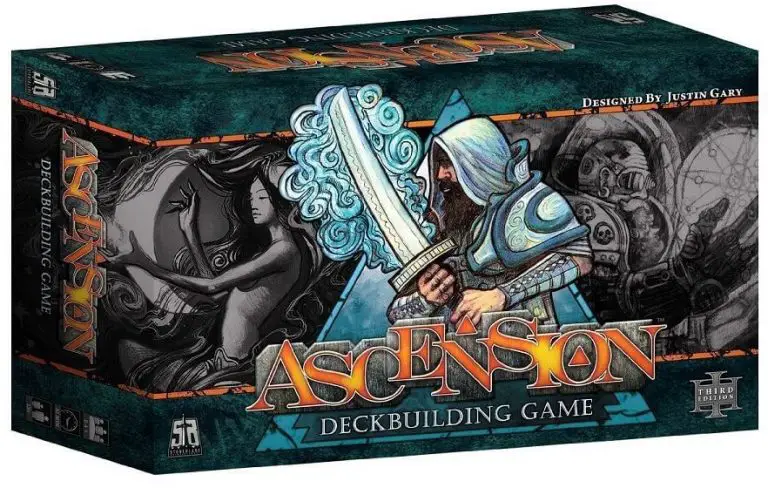
Players: 1 – 4
Duration: 30mins
Time to Learn: 5mins
Another deck building game created by Magic: The Gathering champions. Ascension is a fast-paced deck building game designed by Rob Dougherty, Justin Gary, and Brian Kibler.
The game has very simple rules and is very dynamic – players need to react quickly and change strategies dynamically based on their opponents’ play.
Gameplay
The game has a very simple objective. Use the starting deck you receive to spend ‘runes’ to acquire more powerful cards to add to your deck.
You then use these cards to fight monsters and acquire more powerful cards – which grant honor points.
There is a limited amount of honor points – so once the threshold is surpassed, the player with the most honor points wins.
There are three different types of cards in the game:
- Heroes – have special abilities and synergize with other heroes to form huge attacks.
- Constructs – permanent structures (destroyable) that grant a positive effect to the player
- Monsters – fight heroes and drop honor points upon death
Hero cards are split among different factions which all provide some sort of bonus when multiple heroes of the same faction are played.
This adds a dynamic aspect to the game as players need to strategize as to the best cards to purchase while managing power (the game’s resource) and take into account the strategy their opponent is playing.
Overall this game is very similar to Star Realms and is a very fun, simple and quick deck building game to play.
Pros:
- Awesome artwork
- Quick games
- Crazy combination of cards – endless replayability
Cons:
- You fight monsters – not your opponent
11. Shadowrun: Crossfire
Players: 1 – 4
Duration: 30mins – 60mins
Time to Learn: 10mins
Shadowrun is a cooperative deck building game that is part fantasy, part cyberpunk. Players must work together as a band of outlaws (Shadowrunners) in a world run by megacorporations to overcome different objectives in the game.
The game is a campaign-style deck builder where character upgrades are persistent through multiple play throughs and game sessions.
Gameplay
Shadowrun: Crossfire comes with two obstacle decks, one black market deck, an event deck, mission sheets, role cards, runner cards, and upgrade stickers.
Players start the game by choosing their character and race – like other deck builders, each character and race have their own unique abilities and passive traits.
On the players first turn they will draw a number of cards (determined by race), which will be that characters starting items during the campaign.
While playing through the game, players are able to upgrade their gear and cards to make their characters progressively more strong.
Unlike other deck building games, when cards are purchased they can be used instantly.
The main mission in Crossfire is to survive three rounds of play to win an objective. Players gain karma as they fight and defeat enemies. Karma is able to be used to upgrade characters in the form of stickers.
There is also a crossfire card that is drawn at the beginning of each mission. These are event cards that slightly alter how an event is played out. Generally, these make the games a lot more tough and tense.
Crossfire is a great deck building game with a great legacy aspect to it. However, it can be very hard to get the hang of and is not suitable for newer players.
Pros:
- Player progression is persistent through playthroughs
- Instantly able to use purchased cards
- Lots of character customization options
Cons:
- Very challenging for new players
- Stickers are very hard to remove from cards
Final Thoughts
Since the release of Dominion, the genre of deck building games has exploded. There are new deck building games released every year, with different takes and twists on the deck building mechanic.
The list above are what I believe to be the best deck building games available today. These are games I have played and continue to play now.
If you have a deck building game you think I should try out or add to my list, I would love to hear your thoughts in the comments below.


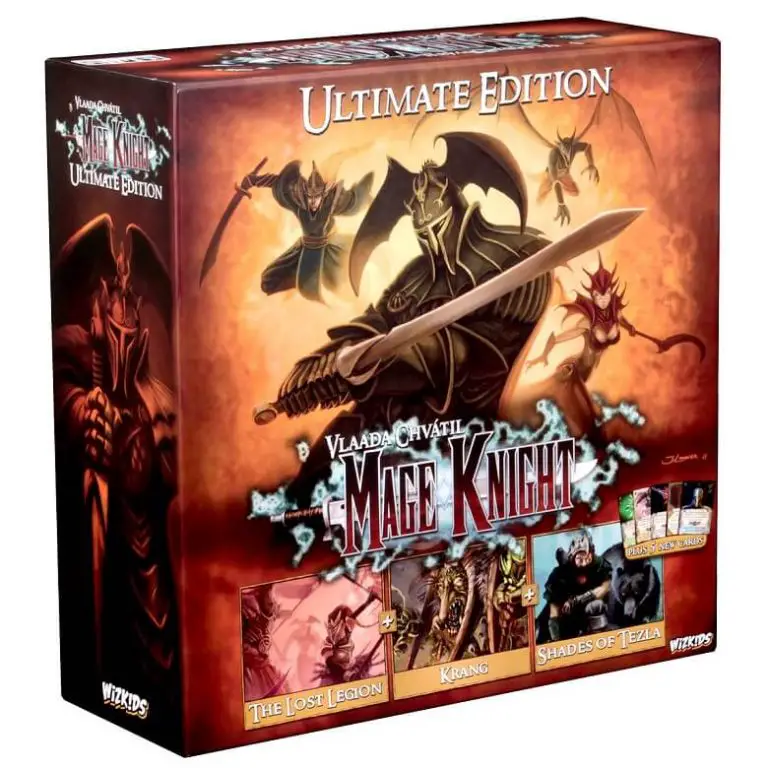
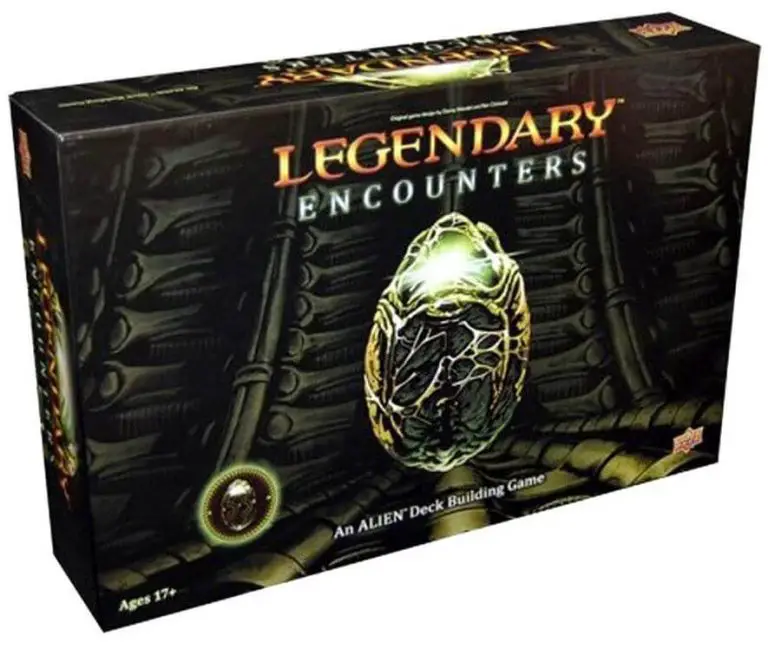
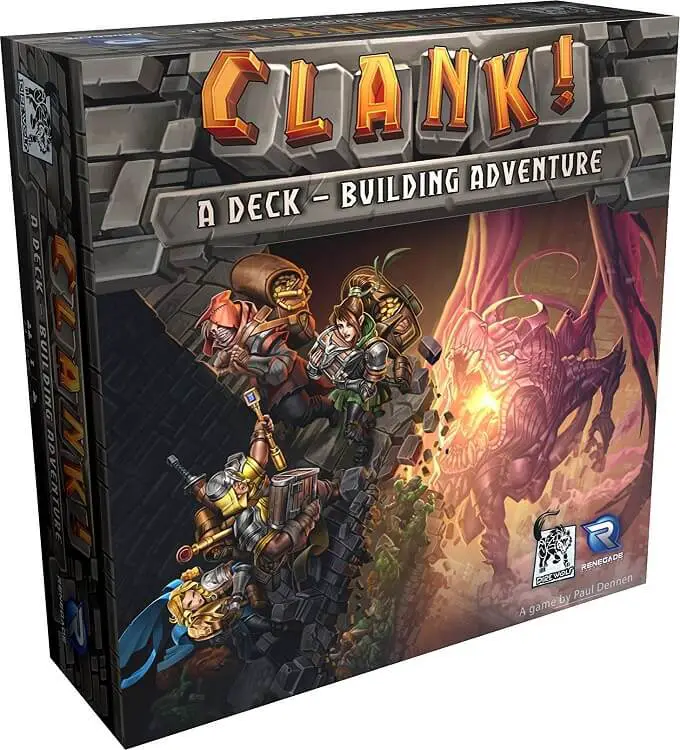
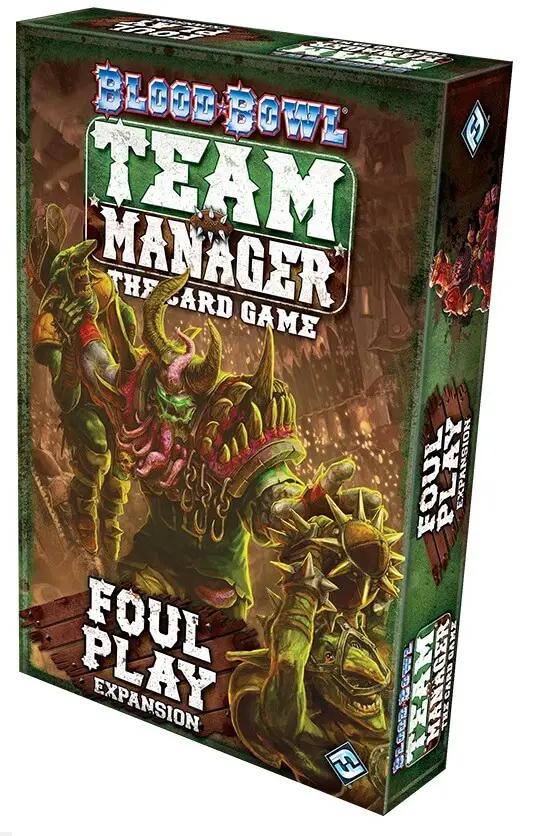
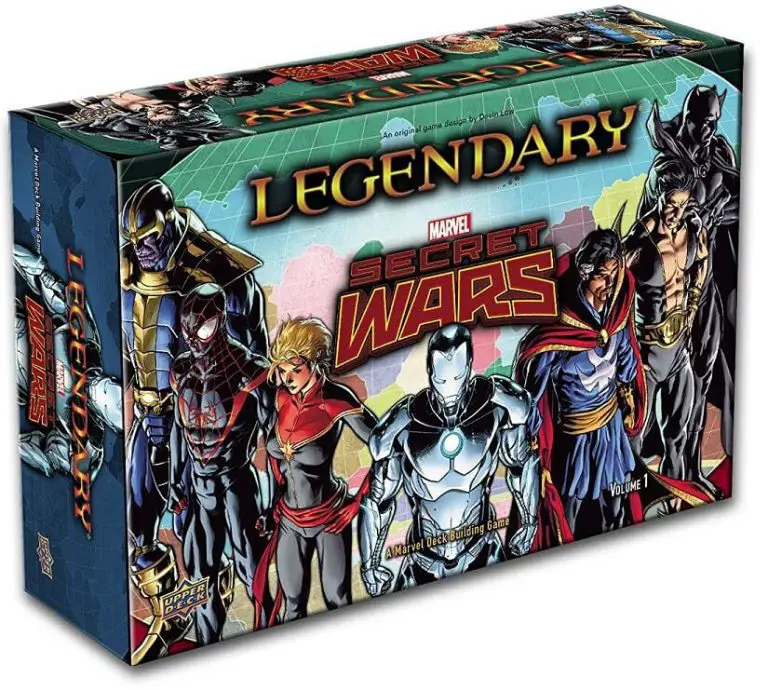
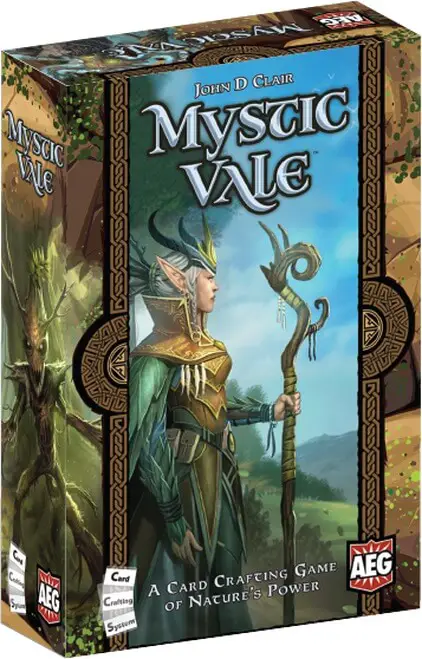
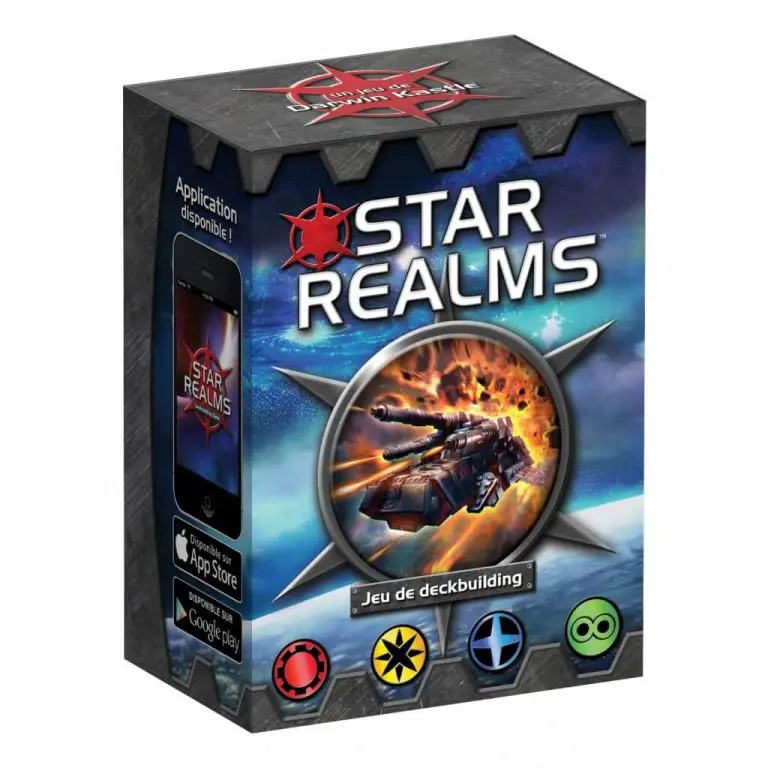

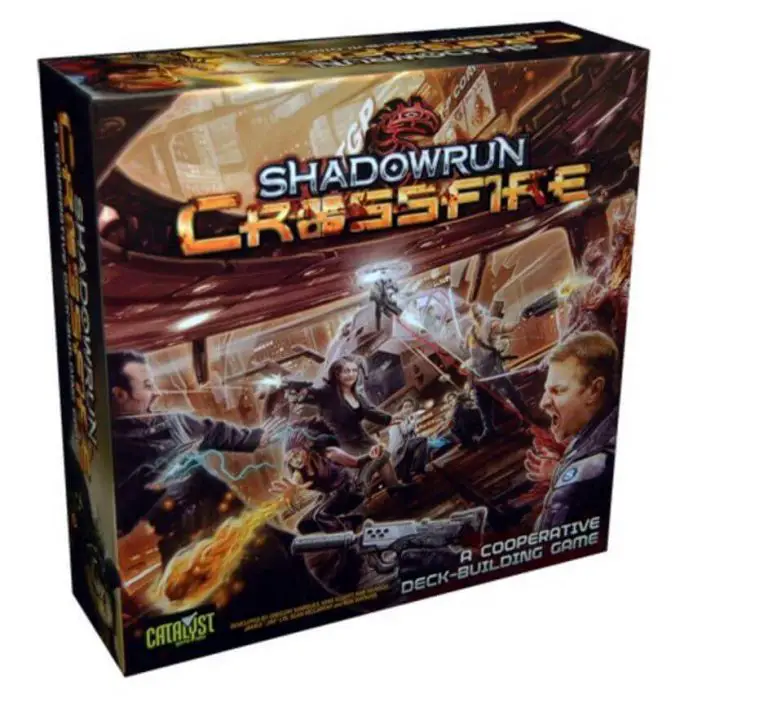
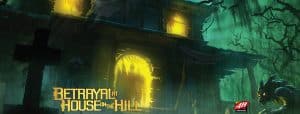
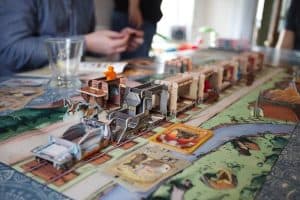
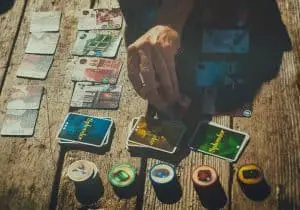
2 Responses
Legendary predator is a legendary encounter game, just like Firefly and X-Files, so it can be combined with Aliens. You can make it Aliens vs Predators.
Surprised not to see ‘Ruthless’ on this list!